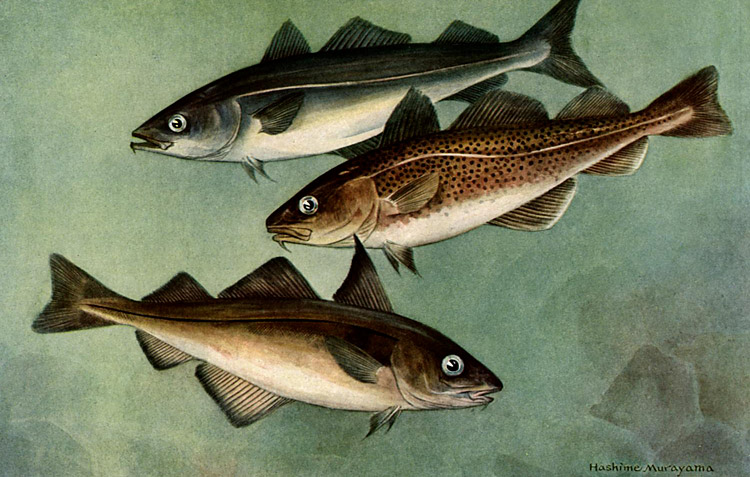The Legend of the Sacred Cod (Or Is It Scrod?)
While “scrod” may be delicious, have you ever heard of anyone actually fishing for “scrod”? Of course not! Find out how this term came to be.

What is scrod? Is scrod the same as cod? And why is there a wooded “Sacred Cod” suspended over the public gallery in the Massachusetts House of Representatives? Read on to learn more about the curious history of scrod fish in New England.
The Legend of the Sacred Cod (Or Is It Scrod?)
There is, of course, no such fish as “scrod” in New England waters or anywhere else. The term began years ago when fishing schooners would return from the Grand Banks to the Boston fish pier, loaded with fish ready to be auctioned off. Now, fancy hotels like, for instance, the Parker House (still going strong) didn’t want to serve fish that came out of the bottom of any ship’s hold. It would be old, flabby, and maybe soft from the weight of each succeeding day’s catch on top of it. To go along with its famous rolls, the Parker House wanted only the small, choice, firm fresh fish from the top layers.
Of course, the Parker House maître d’ couldn’t predict what sort of fish would be on the top layer. If he printed the menu featuring haddock and the top layer turned out to be pollack — well, he might get away with it in Kansas City, but not in Boston. So what to do? The answer was simple. He coined a name for a new seafood. He called it “scrod.” (Possibly he was making a contraction of “sacred cod”?)
What is scrod?
Haddock, cod, pollack, and hake are all related and all caught off the New England coast but, for the most part, “scrod” is either haddock or cod. If both are fresh, properly prepared, and cooked without skin, it’s pretty difficult to tell the difference.
Incidentally, it’s easy to tell cod from haddock if their skins are on. It’s part of the cod’s New England mystique, you see, that it became the “sacred cod” because it was the fish Christ used when he fed the multitudes, and even today the marks of his thumbs and forefingers are plainly visible on the codfish. As to the haddock, well, the devil thought he could multiply fish and feed multitudes too. So he grabbed a cod, but it wriggled and slid through his red-hot fingers, burning two black stripes down its sides. And so it became a haddock. Fishermen still use these markings to differentiate between the cod and the haddock.
Today, a large codfish (or is it a haddock?), carved from a single block of white pine, hangs between two central columns in the Massachusetts House of Representatives—a symbol of all the codfish has meant to the New England economy in years past. This “Sacred Cod” faces north when the Democrats hold the majority, south when the Republicans do. The symbolism of that has always escaped me.
This post was first published in 2014 and has been updated.


